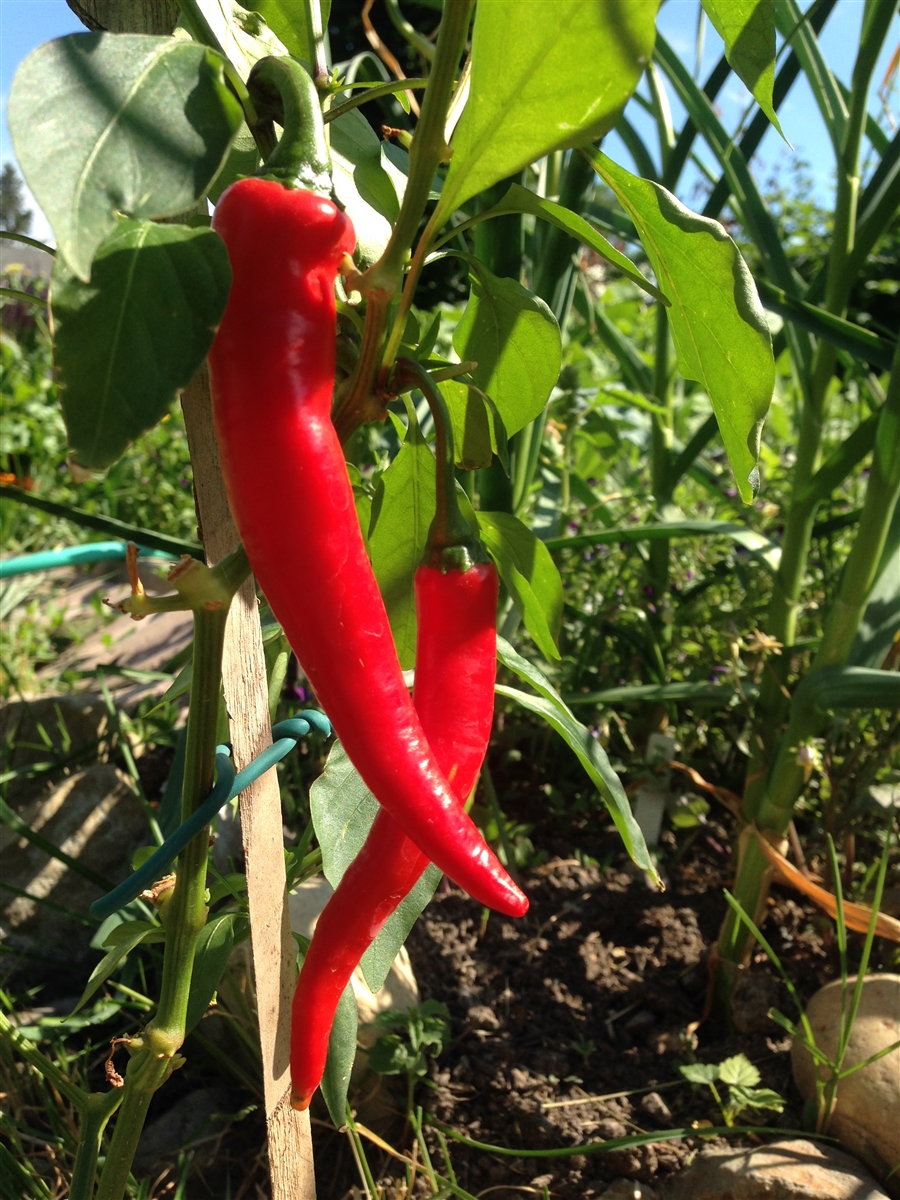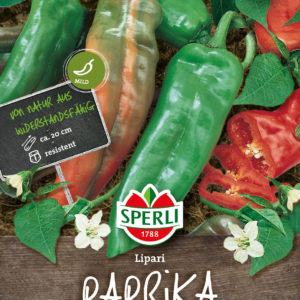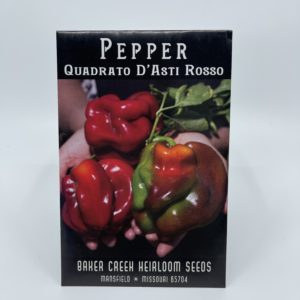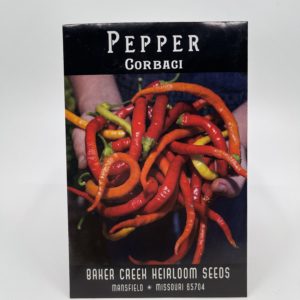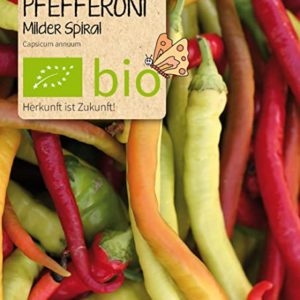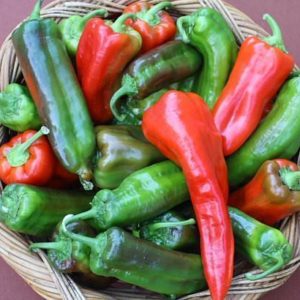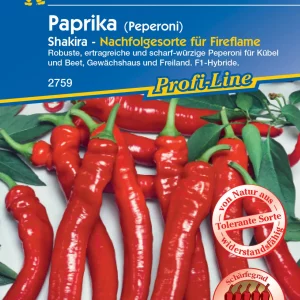LARGE RED THICK CAYENNE PEPPER
1,750 د.ك
- Spicy hot!
- Large shouldered curved fruit
- Not as hot as Long Red Thin
- Open-pollinated seeds
- Matures in 70-80 days
Large Red Thick Cayenne pepper seeds produce strong upright plants. Cayenne peppers are categorized by size, length, and the thickness of the fruit walls, hence the rather generously descriptive name of this variety. The fruits are large-shouldered, wrinkled, tapered, and curved, around 15cm (6″) long by 4cm (1.5″) in diameter. The flesh is twice as thick as other cayenne types. Fruit color is dark green turning to scarlet when ripe. Not as hot as Cayenne Long Red Thin, but it still has a sting in its tail at 30,000 – 40,000 SHU’s. Plants are strong and upright and the pendant fruits come in a concentrated set that works well for processing and drying for cayenne powder.
Matures in 70-80 days. (Open-pollinated seeds)
Latin
Capsicum annuum, C. baccatum, and C. chinense
Family: Solanaceae
Difficulty
Moderately difficult
Season & Zone
Season: Warm season.
Exposure: Full-sun
Zone: Not winter hardy. Grow in Zones 4 and up.
Timing
Peppers need plenty of time to mature before they will bloom and set fruit. Start indoors in early March to the first week of April under bright lights. Transplant only when weather has really warmed up in early June or later. Night time lows should be consistently above 12°C (55°F). Soil temperature for germination: 25-29°C (78-85°F). Seeds should sprout in 10 – 21 days.
Starting
Sow indoors 5mm-1cm (¼-½”) deep. Keep soil as warm as possible. Seedling heating mats speed germination. Try to keep seedlings at 18-24°C (64-75°F) in the day, and 16-18°C (61-64°F) at night. Before they become root-bound, transplant them into 8cm (3″) pots. For greatest possible flower set, try to keep them for 4 weeks at night, about 12°C (55°F). Then transplant them into 15cm (6″) pots, bringing them into a warm room at night, about 21°C (70°F).
Growing
Soil should have abundant phosphorus and calcium, so add lime and compost to the bed at least three weeks prior to transplanting. Mix ½ cup of complete organic fertilizer beneath each plant. Though peppers will tolerate dry soil, they will only make good growth if kept moist. Harden off before planting out in June, 30-60cm (12-24″) apart. Water in with kelp-based fertilizer. Using plastic mulch with a cloche can increase the temperature few degrees. Pinch back growing tips to encourage leaf production. this helps shade peppers and prevents sun-scald in hot summers.
Harvest
When fruit is firm it is ready to pick. But if you wait the fruit will ripen further turning red, yellow, brown or purple. The sweetness and vitamin C content go up dramatically when the fruit changes colour. If you pick green the total numbers of peppers harvested will increase. Fruit that sets after late August will not usually develop or ripen. Pull out the entire bush just before the first frost and hang it upside down in a warm, dry place to ripen hot peppers. Expect 5-10 large bell peppers per well-grown plant, 20-50 hot peppers per plant.
Seed Info
In optimal conditions at least 65% of seeds will germinate. Usual seed life: 2 years.
Diseases & Pests
To prevent rot and wilt, plant in well-drained soils and follow a 4-year rotation.
If cutworms are a problem, use paper collars at the plant base. Tobacco mosaic virus (TMV): young growth is malformed and leaves are mottled with yellow. To prevent it: wash hands after handling tobacco, before touching peppers. Control aphids, which spread the disease.
Companion Planting
Pepper plants make good neighbours for asparagus, basil, carrots, cucumbers, eggplant, endive, oregano, parsley, rosemary, squash, Swiss chard, and tomatoes. Never plant them next to beans, Brassicas, or fennel.
غير متوفر في المخزون


